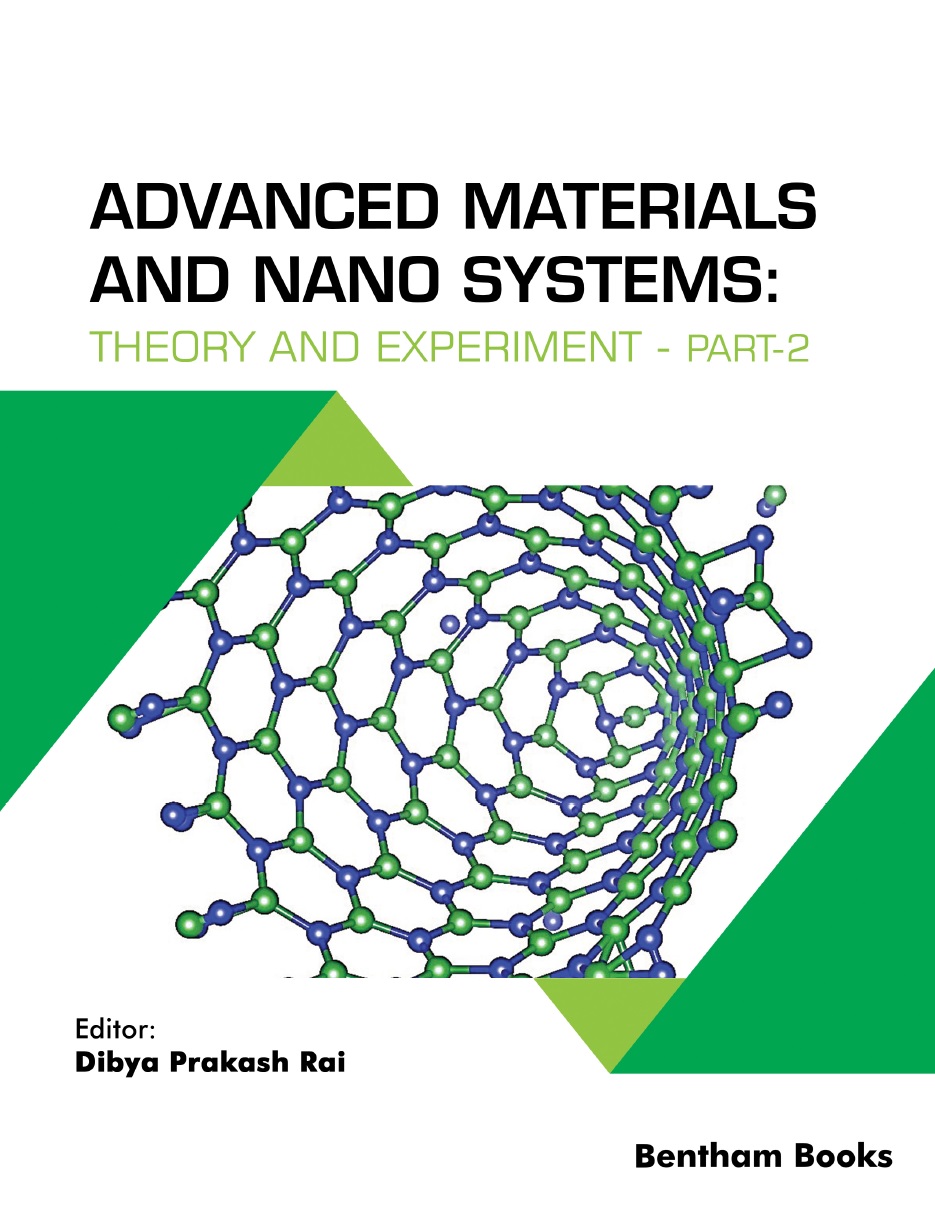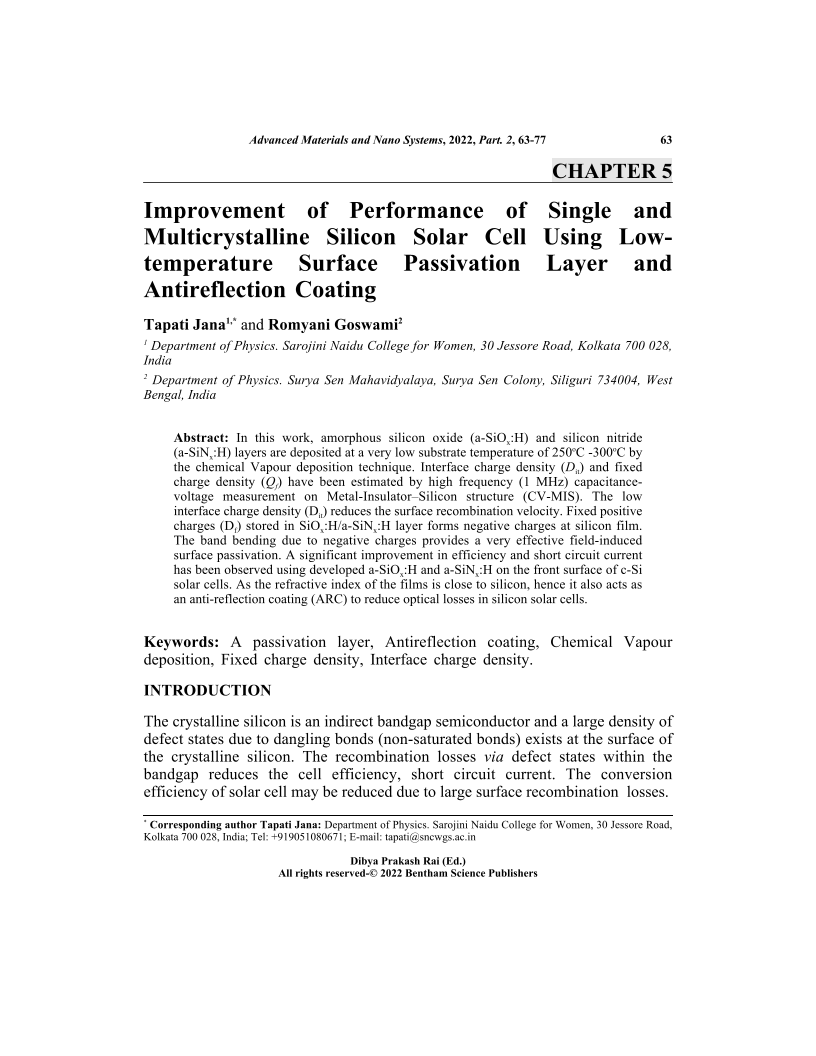Improvement of Performance of Single and Multicrystalline Silicon Solar Cell Using Lowtemperature Surface Passivation Layer and Antireflection Coating

- Authors: Tapati Jana1, Romyani Goswami2
-
View Affiliations Hide Affiliations1 Department of Physics. Sarojini Naidu College for Women, 30 Jessore Road, Kolkata 700 028,India 2 Department of Physics. Surya Sen Mahavidyalaya, Surya Sen Colony, Siliguri 734004, WestBengal, India
- Source: Advanced Materials and Nanosystems: Theory and Experiment - Part 2 , pp 63-77
- Publication Date: September 2022
- Language: English
Improvement of Performance of Single and Multicrystalline Silicon Solar Cell Using Lowtemperature Surface Passivation Layer and Antireflection Coating, Page 1 of 1
< Previous page | Next page > /docserver/preview/fulltext/9789815049961/chap5-1.gif
In this work, amorphous silicon oxide (a-SiOx:H) and silicon nitride (a-SiNx:H) layers are deposited at a very low substrate temperature of 250oC -300oC by the chemical Vapour deposition technique. Interface charge density (Dit) and fixed charge density (Qf) have been estimated by high frequency (1 MHz) capacitancevoltage measurement on Metal-Insulator–Silicon structure (CV-MIS). The low interface charge density (Dit) reduces the surface recombination velocity. Fixed positive charges (Df) stored in SiOx:H/a-SiNx:H layer forms negative charges at silicon film. The band bending due to negative charges provides a very effective field-induced surface passivation. A significant improvement in efficiency and short circuit current has been observed using developed a-SiOx:H and a-SiNx:H on the front surface of c-Si solar cells. As the refractive index of the films is close to silicon, hence it also acts as an anti-reflection coating (ARC) to reduce optical losses in silicon solar cells.
-
From This Site
/content/books/9789815049961.chap5dcterms_subject,pub_keyword-contentType:Journal -contentType:Figure -contentType:Table -contentType:SupplementaryData105

